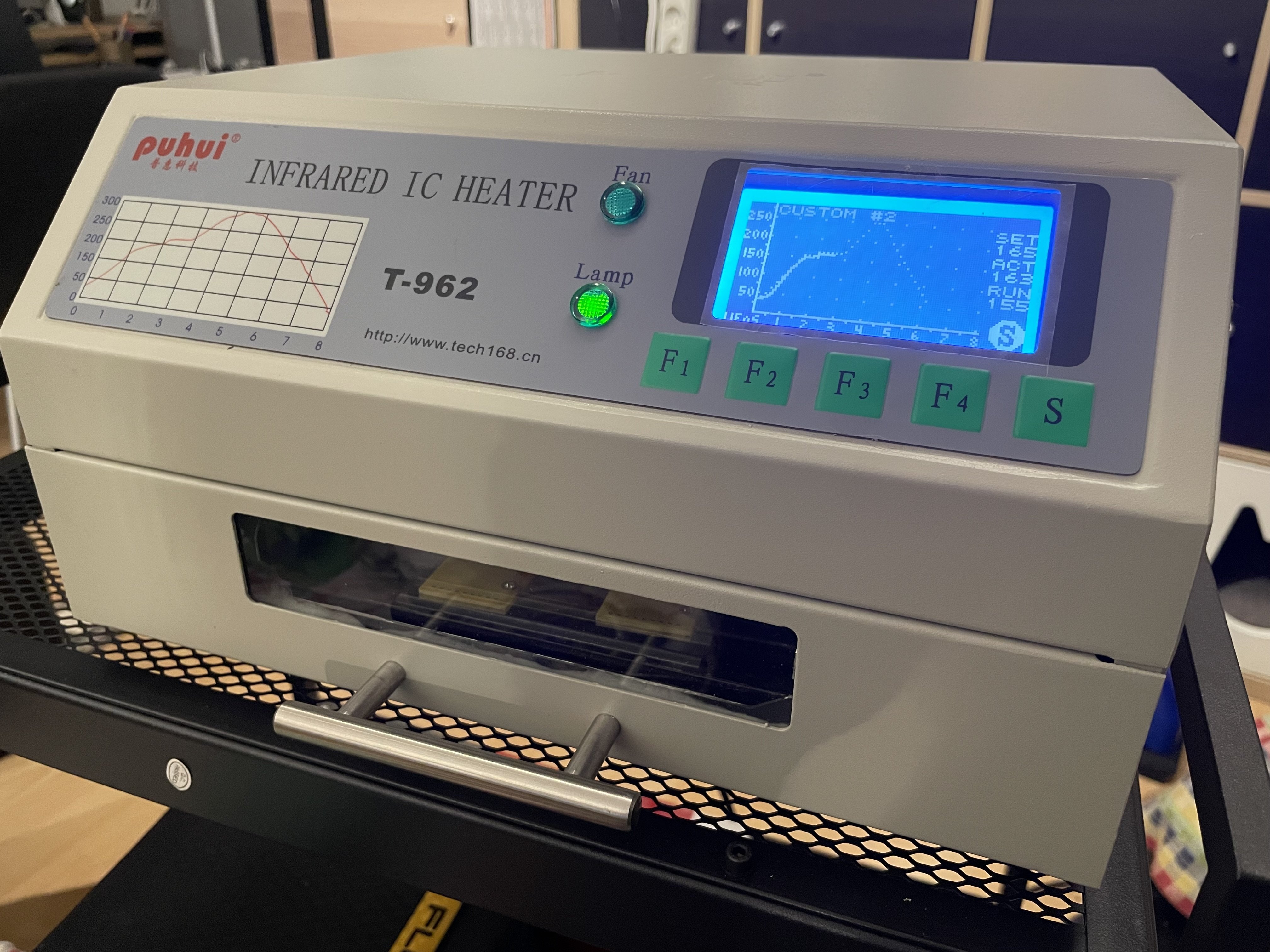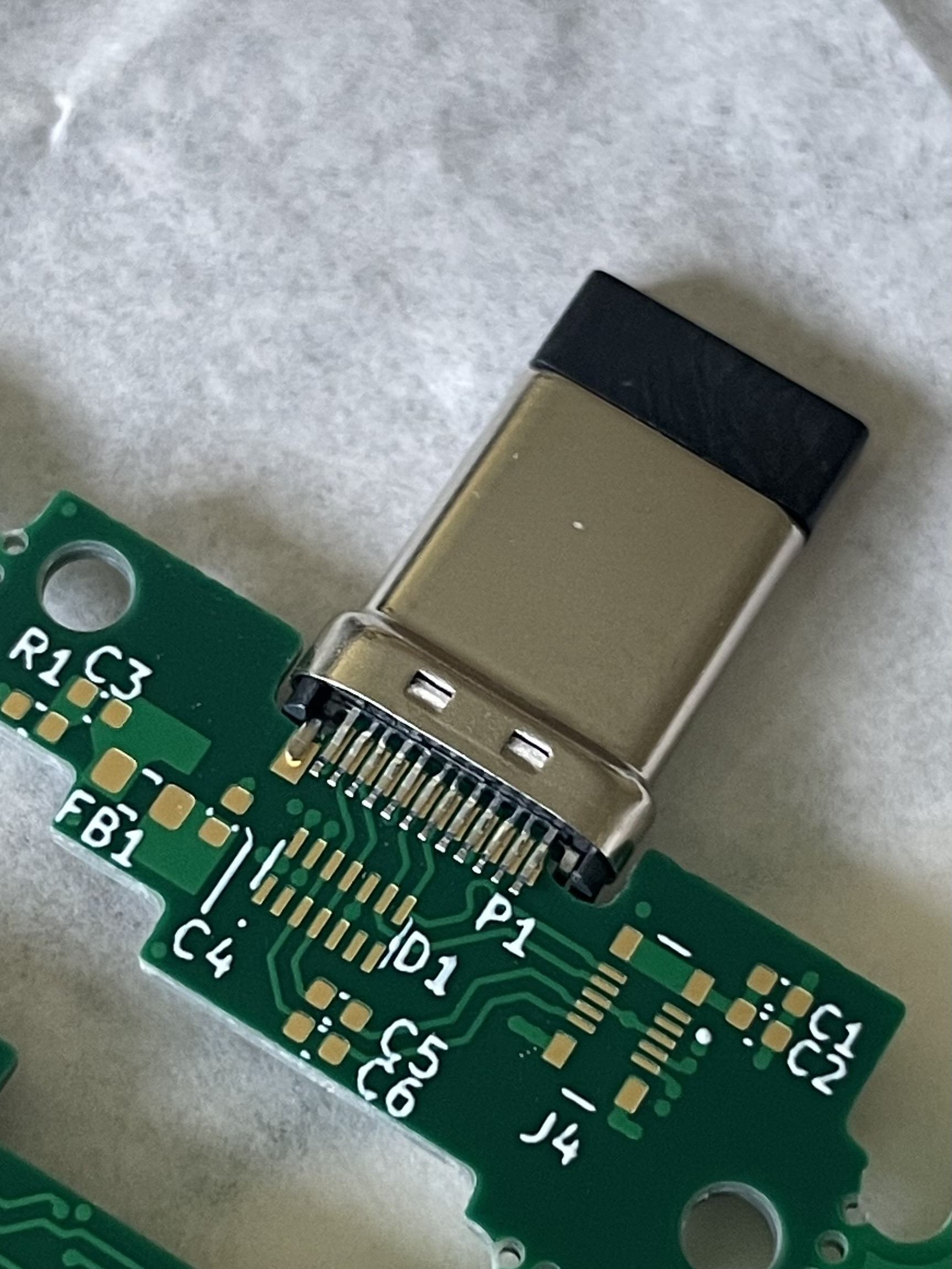I’d say that’s a version of a soft termination capacitor. They are used when there’s risk the board is flexed or exposed to mechanical or thermal shocks to prevent cracks in the capacitor (causing it to fail short).
tbe
Mine is the smallest one of a series of these, it has two heating elements inside.

I don’t have it for that long but I didn’t have problems so far, I’m usually only making rather small PCBs tho. I did make some recommended modifications like replacing the paper insulation tape with a kapton tape, proper grounding and flashed another firmware.
I did only use a small hotplate and/or a hotair station, so it seems to be definitely a stepup here 😌.
Yeah I have such a small, cheap Chinese one (T962) that I modified and flashed a nicer firmware on.
I basically populated the bottom side (with more components) first after applying solder past with a stencil, then reflowed the board. After cooling down I applied the solder paste to the upper side (with the LED) by using a small needle on a syringe (because using a stencil was too weird since the board wasn’t laying flat) but since the pads are relatively large and not that many that worked fine. Then I placed the components on that side and simply run the reflow cycle again.
I started with the bottom side because there are no heavy components. I expected heavy parts to just fall off on the second reflow cycle so I tried to avoid that.
At the end I manually assembled the USB connector using a regular soldering iron and tons of flux gel.
Maybe you can use this to find more connectors that could match yours: https://connectorbook.com/identification.html?m=NT&n=lo_prof_1r_w2b_conn_1p2 It has a pretty handy identification tool (you can even browse by pictures). It usually suggests quite an amount of connectors but it can guide you in the right direction and you can look at the according datasheets to find out more. By the way the creator of this community made that homepage and a book related to it (or probably the other way round 😅).


Maybe this: https://www.microchip.com/en-us/product/PCI11400 Unfortunately to access the whole datasheet you might have to sign an NDA (and probably have a large company), also designing things with those kinds of interfaces isn’t trivial.
Alternatively maybe this: https://www.renesas.com/us/en/products/interface/usb-switches-hubs/upd720202-usb-30-host-controller It also seems to be locked by an NDA.